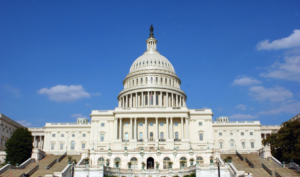World Rugby’s proposed transgender ban opens a front in the gender wars

World Rugby’s proposed new policy banning transgender women on the basis that their physique, muscle mass and strength poses a safety risk to other (cisgender) female athletes opens a front in the gender wars that have plagued sport, and places World Rugby on a dangerous slippery slope.
Few institutions maintain a binary male-female segregated structure more rigidly than sport. How to accommodate the participation of transgender persons within these segregated structures has been a vexed issue for some time.
Sports governing bodies that have sought to tackle this difficult issue have invariably done so through the dual prisms of human rights and competitive fairness – seeking, on the one hand, to provide an inclusive environment for transgender athletes that gives them the opportunity to compete free from discrimination and, on the other hand, to provide cisgender athletes with an equitable competitive environment. Requiring transgender women to reduce their testosterone level below a predetermined threshold has been key to striking this balance.
World Rugby’s examination of the issue through the prism of health and safety is an interesting development in the debate, and one that carries risks for all involved.
It appears illogical to ban only one category of people with certain physical attributes, and not others with the same attributes. To do so is the essence of discrimination.
Testosterone is to sport what climate change is to environmental science. There are those for whom testosterone is a very important determinant of competitive advantage; those who deny or are sceptical of the role it plays; and those who acknowledge its role but differ with respect to its effects.
World Rugby has sought to bypass much of this debate by focusing not on current testosterone levels, but on what it considers are the “significant” physical advantages transgender women who transition after male puberty retain over cisgender women – even after they take steps to lower their testosterone levels.
According to a report prepared for World Rugby, these advantages include being 25 to 50% stronger; 30% more powerful; 40% heavier; and 15% faster.
Importantly, these advantages are said to create at least a 20 to 30% greater risk of injury for cisgender female rugby players competing against transgender female players. And it’s this safety risk that is the basis of the proposed ban on transgender women.
This new angle will pose a challenge for advocates for transgender inclusion. They’ll find safety arguments more difficult to counter than arguments based on competitive fairness, positing as it does one human right (the right to equality and freedom from discrimination) against another human right (the right to safety and freedom from harm).
It also raises many questions.
If transgender women are banned because they pose a safety risk to cisgender women, then should not cisgender women with similar physical attributes also be banned? The gender status or identity of an individual does not create any inherent danger or risk to safety. Rather, it’s disparities in strength and/or physique that may do so, depending on the sport. It appears illogical to ban only one category of people with certain physical attributes, and not others with the same attributes. To do so is the essence of discrimination.
And if transgender women with these physical attributes are to be banned, then should it not be on a case-by-case basis, rather than through a blanket prohibition? Transgender women, like all women (and men for that matter), come in all shapes, sizes and strengths. Why should all transgender women be banned based on statistical averages of “typical players”?
Here, a comparison with the Australian Football League’s Gender Diversity Policy is instructive. It requires transgender women seeking to compete in its elite women’s competition to, first, maintain their testosterone below a predetermined level, and, second, submit 24 months of physiological data relevant to their strength, stamina and physique. This data is used to determine whether there is a relevant and significant disparity in the transgender woman’s strength, stamina or physique that may give rise to an unreasonable competitive advantage. However, it could equally be used to determine if the transgender woman poses an unreasonable safety risk.
The AFL’s policy has been criticised for its extensive and invasive individual testing, and for failing to provide transgender women athletes with sufficient certainty, as their eligibility is subject to review at any time. However, when compared to World Rugby’s proposed blanket ban, it appears far more reasonable.
Further, the proposed World Rugby ban only applies to transgender women competing against other women. It doesn’t apply to transgender men competing against other men. According to reports, transgender men will be allowed to play provided they pass a physical assessment and sign a statement accepting the greater physical risks associated with competing against cisgender men. Should transgender men be allowed to choose to accept the higher safety risks that World Rugby feels compelled to remove from women’s sport?
The answers to these questions may not be the ones World Rugby expects.
The inclusion of larger and/or stronger transgender women athletes should serve as a proxy for all larger and stronger outliers. To the extent larger and stronger athletes (transgender or cisgender) may pose a safety risk, it’s best to address that risk within the general policies and rules of the sport – not through blanket bans.
This article was first published on Monash Lens. Read the original article





